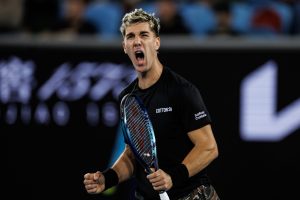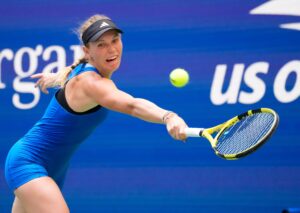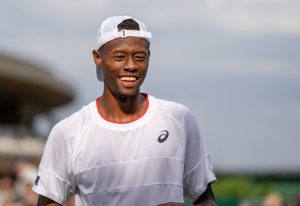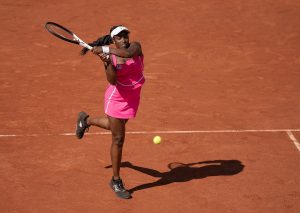Another exciting week has passed on the ATP Challenger Tour with plenty of variety in surfaces, overhead conditions and even time zones. Tournaments were contested on a very fast indoor court in Ortisei, a slower, outdoor hard court in Orlando and an on a South American clay court in Guayaquil. Here’s a recap of what you might have missed.
Challenger Tour Weekly Recap
Ortisei
Ilya Ivashka has found some great form in the past month or so. The Belarusian captured the title in Istanbul, before going on to reach the semifinals at Eckental where he lost to eventual champion Sebastian Korda. In Ortisei, his confidence and quality were evident from his very first match, which saw him dismiss Matteo Viola in just under 50 minutes. He did face a surprisingly tough test up against Johannes Haerteis, who double-faulted when up a set point in the first set tiebreak, but Ivashka was ultimately a deserved 7-6 6-3 winner.
He backed that up in the quarterfinals against Tomas Machac, who was last week the runner-up in Bratislava and got the better of Ivashka in Prague back in August. But Ivashka held his nerve to prevail 7-6 7-6. That set up a semifinal clash with recent Challenger Tour hero Aslan Karatsev, who entered the match riding a 13-match winning streak at this level. But despite falling behind early on, Ivashka dug deep to grind the Russian down, counterpunching with depth and accuracy.
Fifth seed Antoine Hoang, meanwhile, had recently reached semifinals in Ismaning and Bratislava, but was dealt a very tough first-round draw in Ortisei, coming up against his compatriot Arthur Rinderknech, who has won two titles on the Challenger circuit this season. Unsurprisingly, it was a titanic struggle, but it was Hoang that came out on top, winning in a final-set tiebreak. Often a win like that can set a player up for a great run and that was exactly what happened for Hoang in Ortisei.
Admittedly, Hoang did not face the toughest path to the final having overcome Rinderknech, with Pavel Kotov, Julian Lenz and Alexandre Muller not in the same class as the opponent’s faced by Ivashka, although both Lenz and Muller took a set off the fifth seed. In the early stages of the final, Hoang’s struggles continued, with the Frenchman making a few poor errors, although Ivashka’s consistent depth did put him under pressure.
Hoang managed to save the first two break points that Ivashka forced, but he could then only stand and watch as Ivashka fired a stunning forehand pass on the run to break serve at the third time of asking. And with the Belarusian’s serve working superbly, the early break proved to be decisive, as he won the first set 6-4. But then, almost out of nowhere, Hoang started to fare much better in the extended rallies, finding the right balance between consistency and power.
His confidence rose as a result and, with some help from Ivashka unforced errors, he broke for the first time in the match to take a 4-2 lead in the second. He quickly levelled the match thereafter, but the level of his play dropped again midway through the decider. Down 2-3 15-40 after a series of misses, he made matters worse with a very untimely double fault. But, perhaps feeling like his chance to win the match had gone, Hoang loosened up.
That allowed him to put pressure on Ivashka when the Belarusian served for the match. And, speaking of untimely errors, he broke back courtesy of an Ivashka double fault. Reaching the relative safety of a tiebreak was not entirely straightforward for the Frenchman, however, who had to save a match point down 5-6, but he managed to do so with a good serve-and-forehand one-two punch. Unfortunately for Hoang, his struggles behind his serve continued in the tiebreak.
Where Ivashka managed to earn a few free points thanks to his serve in the deciding tiebreak, Hoang had to fight his way through every point. A missed volley on the stretch at 1-1 saw him fall behind a minibreak and, as it turned out, he was unable to find a way back into the contest, losing the tiebreak 3-7 to succumb to a 4-6 6-3 6-7 loss after two hours and 20 minutes of play.
Ivashka, who is now only around 50 ranking points from the top 100, will next be in action in Maia in two weeks time on an indoor clay court. A title in Maia might well be enough to take him into the top 100, but he rarely plays on clay and has only made one semifinal on the surface so far in his career. For Hoang, his defeat at the hands of Ivashka was the end of his season and, despite the disappointment of losing the final, 2020 surely ended on a high note.
Orlando
Despite being viewed as one of the bigger talents among the NextGen, 19-year-old Brandon Nakashima arrived in Orlando having never reached a Challenger Tour final. But he did enjoy a patch of good form before the pandemic brought a halt to the season at the end of February and he then gave eventual finalist Alexander Zverev a tough test, for two sets at least, in the second round at the US Open. He did struggle during the clay-court season, however, with his lack of experience and practice on the surface evident.
But back on American soil, and perhaps crucially hard courts, all the pieces fell right into place for the teenager. After a quarterfinal run in Cary (lost to Mikael Torpegaard), he excelled in Orlando. In the second round, Nakashima defeated top 100 player and top seed Thiago Monteiro, with the only opponent who came close to taking a set off him en route to the final Mackenzie McDonald. But the older American failed to capitalise on two set points in the second set, losing 3-6 6-7.
In the aforementioned Cary Challenger, Prajnesh Gunneswaran finished as runner-up to Denis Kudla. But if that run had given him confidence, it was not immediately apparent. After beating Sadio Doumbia in straight sets in the first round, he found himself down 5-7 1-4 0-40 on serve against Wu Tung-lin. But somehow Gunneswaran dug himself out of that hole, before a backhand winner that landed right on the line and a Wu double fault saw him break back and keep his chances alive.
The shift in momentum that followed was extremely quick as Gunneswaran reeled off the next five games to take a 2-0 lead in the deciding set. Unfortunately, Wu proved unable to continue and retired with an injury. Gunneswaran, perhaps feeling that he was playing on borrowed time, suddenly rediscovered his best tennis and didn’t have many problems seeing off the challenges of Dmitry Popko and Christopher Eubanks in the quarterfinals and last four respectively.
In the final, as can often prove the case, the opening game of the match proved to be tricky for the server. With Nakashima yet to find his groove, Gunneswaran created a break-point opportunity with a couple of great returns. But he then netted a simple backhand down the middle to waste his chance. Unfortunately for the Indian, missing out on break points emerged as an important, arguably decisive, theme of the match.
In the end, Nakashima was the player to strike first, breaking at 3-2. In doing so, Nakashima appeared to have discovered the winning formula, which amounted to keeping Gunneswaran on the move with patient play from the baseline, before ending the point with an approach to the net or drawing an error from the Indian’s racket. Those patterns of play saw the American go on to clinch the opening set 6-3.
Gunneswaran, however, was ready and willing to fight his corner. He created another break point early on in the second, but he was again unable to convert. Nakashima won a short rally after a couple of well-chosen and well-placed shots, with Gunneswaran’s lateral movement exposed as he was pulled wide into his forehand corner and couldn’t get the ball back into play. Then, to add insult to injury, right after missing that chance he was broken again, with Nakashima drawing an error after some excellent defensive gets.
The Indian then managed to create two chances to break straight back, but failed to get either return back into play as Nakashima hit two well-placed, if not particularly powerful, first serves. Gunneswaran looked certain to break in the eighth game of the match, having played one of his best rallies of the match which he ended by firing an inside-in forehand winner to earn a 0-40 lead. But he again got tight under pressure, twice failing to get his return into play and mishitting a forehand.
Still there was more drama to come. Gunneswaran forced one last break point and on that occasion he was rather unlucky. Nakashima failed to make space away from a Gunneswaran shot that landed deep in the court, but his mishit forehand landed just inside the baseline. Gunneswaran, evidently frustrated, ended up trying to bring the rally to close with a big forehand, but went for too much and missed. Nakashima held and two games later he had completed a 6-3 6-4 win.
The match was much closer than the scoreline suggests, but the difference was Gunneswaran’s inability to convert his chances. That was enough for Nakashima to win his first Challenger Tour title in his first final at this level. The 19-year-old moved to a career-high world #166 as a result of his triumph, 33 places higher than his previous career-best ranking. Currently, it was the last match of 2020 for both men, with neither signed up for any of the four remaining Challengers this season.
Guayaquil
Andrej Martin came to South America hoping to break his five-match losing streak. The Slovakian endured four of these losses in tour-level events, so perhaps his confidence wasn’t as low as it usually is for a player who fails to win five consecutive times. Getting started quickly and piling up confidence had to be extremely important for him this week and he did just that, beating Roberto Ortega-Olmedo, Marcelo Tomas Barrios Vera, and Sebastian Baez in straight sets.
The semifinals saw him face Jesper De Jong, a Dutch qualifier who rarely plays ATP Challenger Tour events and mostly competes on the ITF circuit. De Jong put up a stern test but ultimately had to succumb 3-6 in the deciding set to allow Martin into his first final in over a year.
22-year-old Francisco Cerundolo won his first ATP Challenger Tour title earlier this season, defeating Pedro Sousa in a deciding tiebreak at Split. The Argentinian took a break following the European clay circuit and made a comeback after a month away in Guayaquil. Despite that short period of inactivity, no rust was visible in his game at all. Actually, it had to be this way if he wanted to make a deep run with a draw of such caliber.
In the second round, Cerundolo faced sixth-seeded Juan Pablo Varillas and had to pull out the win in a deciding-set tiebreak. Next up was this year’s Lisbon champion and the fourth seed, Jaume Munar, who Cerundolo defeated coming back from a set down. Second-seeded Roberto Carballes Baena seemed to be in great shape in Guayaquil but Cerundolo completely dismantled him 6-2 6-1 in about 75 minutes.
Cerundolo was under a lot of pressure from the very beginning, going down a breakpoint in each of his first two service games. On both of these points Martin run around his forehand and blasted the return deep into the court. The Argentinian was able to pick up the balls though and with some luck reset the rally back to normal. Perhaps it was just a bit of decisiveness and following up the big forehands with a net approach that Martin lacked, but the result spoke for itself. Cerundolo also impressed with a perfectly-timed dropshot on the second opportunity. Martin didn’t even move.
The pressure wasn’t fully off yet though as Cerundolo once again had to fend off a breakpoint at 3-3. This time it was a successful combination of a wide serve and an inside-in forehand bullet, although the kill shot seemed very loose and without much control. As it often happens, missing many opportunities didn’t bode well for Martin’s chances later. The Slovakian played an awful service game when serving to stay in the set, selecting the wrong shots and struggling to generate clean contact with his forehand.
Martin had to do a quick mental reset or else the match could run away from him quickly. He was able to save a breakpoint with a big serve and didn’t allow Cerundolo to start steamrolling. Instead, it was the Slovakian who broke for 2-1 after some straightforward forehand errors and his own good defense with the slice. Hitting the ball from the lower contact point remained a huge issue for Cerundolo and despite not looking that tricky, Martin’s slice was actually bringing him a ton of points. A couple of these errors were instrumental to another break of serve and the beginning of a deciding set.
But Martin’s own demons came back to haunt him too. The Slovakian’s forehand is his primary tool of dictating the rallies but there were moments when it was extremely inconsistent. The shot selection wasn’t the best either as Cerundolo broke for 2-1 in the decider, courtesy of one huge forehand return winner. Cerundolo, meanwhile, regained the confidence and the right body language.
The Argentinian was now hitting with a lot more intent and even found another break with two backhand down-the-line winners, a shot he avoided like the plague earlier. On the other hand, Martin appeared a bit disinterested as soon as he went down 1-4. Cerundolo was unruffled and calmly served out the match 6-4 3-6 6-2.
Martin’s run brought him back to the top 100 and very close to securing a finish in that elite group. Cerundolo is continuing his ascension to the top and is now situated at the 162nd spot in the ATP Rankings. Both the winner and the runner-up at Guayaquil are signed up for each of the two upcoming weeks of the 2020 ATP Challenger Tour.
Challenger Tour magic:
Given the result in the match, no wonder he gave it everything he had:
Yeah, @mackiemacster is fast. 🏃♂️🔥
Unreal hustle from the 🇺🇸 in Orlando. pic.twitter.com/C0VDVnqXcg
— ATP Challenger Tour (@ATPChallenger) November 20, 2020
Some shots have no explanation.
This lob from @stefankozlov is one of them. Ridiculous stuff in Orlando. pic.twitter.com/qmlLAAxnBU
— ATP Challenger Tour (@ATPChallenger) November 17, 2020
Events held next week:
For the first time since the tour restart, there are no tournaments held in Europe. The penultimate week of the 2020 ATP Challenger Tour will be played entirely on South American red clay.
- Sao Paulo Challenger de Tenis (Challenger 80)
- Lima Challenger (Challenger 80)
Top 100 players in action:
- Thiago Monteiro (Sao Paulo)
- Federico Coria (Lima)
First-round matches to follow:
In Lima, Nicolas Jarry is making a comeback from his doping suspension. He’ll play Nicolas Alvarez in singles and partner the very same Nicolas Alvarez in doubles.
Sao Paulo
- (1) Thiago Monteiro vs (WC) Gastao Elias
- Thomaz Bellucci vs Teymuraz Gabashvili
- Sebastian Baez vs Chun-Hsin Tseng
Lima
- (1) Federico Coria vs Mario Vilella Martinez
- Nicolas Jarry vs Nicolas Alvarez
- (SE) Jesper de Jong vs (4) Jaume Munar
Main photo:
Embed from Getty Images






